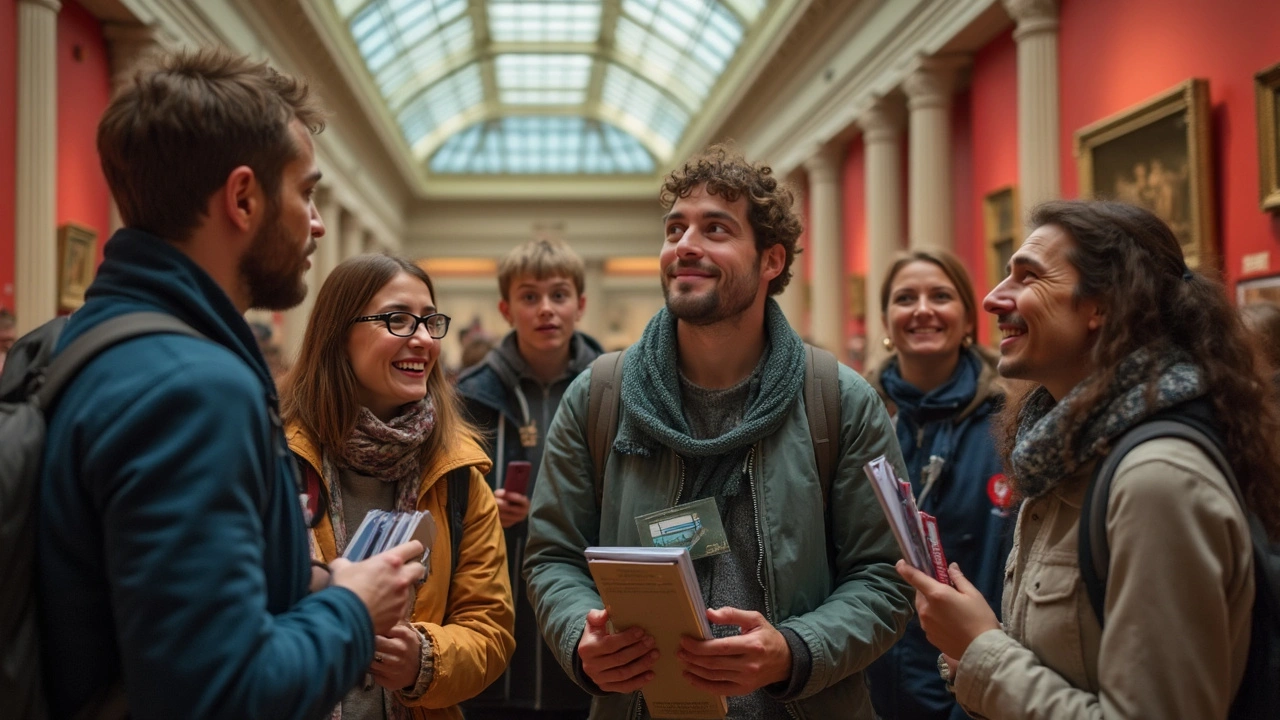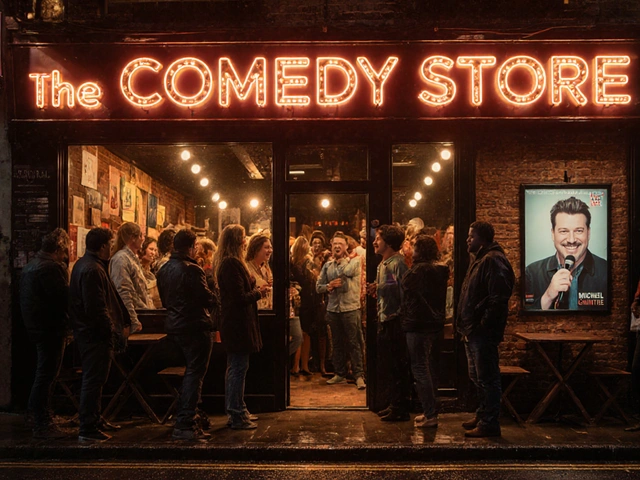If you live in London or you’ve spent more than a weekend here, you know the British Museum isn’t just another tourist box to tick. It’s the kind of place you revisit—sometimes just to grab a coffee in Bloomsbury or escape a rainstorm—because something always surprises you inside.
Loads of Londoners use the museum as a local landmark, meeting spot, or even a quiet place to work (yes, the Great Court has free WiFi and the Benugo café does a solid flat white). The scale can be intimidating, but you don’t need to see everything in one go. In fact, the museum is best enjoyed in small chunks, like popping in on a lunch break or planning outings with mates from work or Uni.
Thinking about the crowds? Mornings midweek are your friend. Fridays offer late openings until 8:30pm, perfect if you’re dodging the rush or want a different vibe after hours—sometimes there are even free talks or music events. And since it’s smack in the middle of Zones 1 and 2, you can get there easily by Tube (Holborn, Tottenham Court Road, or Russell Square are all within walking distance—grab a Greggs sausage roll on the way if you’re peckish).
- The British Museum and London’s Identity
- Smart Ways to Visit (And Skip the Queues)
- Must-See Objects With Local Stories
- Family Days Out: Making It Fun for Kids
- Hidden Corners Locals Love
- Quick Tips for Your Next London Museum Trip
The British Museum and London’s Identity
Walk around London for a while and you’ll realize there aren’t many places as deeply tied to the city’s story as the British Museum. Opened back in 1759, right in the heart of Bloomsbury, it was the world’s first national public museum. The kicker? It’s always been free for everyone. That’s a big deal in a city where even a basic sandwich can set you back a few quid.
The museum says a lot about the city. London’s entire history is about crossovers—Roman ruins tucked near the Gherkin, Bangladeshi curries in Spitalfields, reggae sound systems in Notting Hill. The British Museum brings all those world histories together under one roof, making it a hangout for people from every corner of the planet who’ve ended up in the capital.
There’s a bit of controversy, too—locals debate fiercely about how the museum got some of its biggest treasures. The Parthenon Marbles, the Rosetta Stone, the Benin Bronzes—they aren’t just museum pieces to some people, they’re symbols with big questions attached. But for Londoners, the museum’s real value is how it sparks these conversations, both in school classrooms and at the pub after work.
"The British Museum connects people with the very roots of who they are and where they come from. It’s London’s melting pot, turned inside out." — Dr. Tristram Hunt, Director, Victoria and Albert Museum
And let’s be real—most of us get our first taste of the museum on a school trip, usually spent gawking at Egyptian mummies or sketching in the Greek rooms. But come back as an adult and it’s a different vibe. Whether you’re queuing up for a blockbuster exhibit like ‘China’s Hidden Century’ or planning a study meet-up with mates, the British Museum always feels plugged into the buzz of the city.
Countless Londoners see it as a cornerstone to the city—somewhere that isn’t just about the past, but about London’s present and future too. From Diwali events to quiet Ramadan evenings, the museum hosts celebrations that reflect who really lives here now. If you want to understand what keeps London ticking, a wander through its museum says more than a dozen walking tours ever could.
Smart Ways to Visit (And Skip the Queues)
The British Museum is legendary for crowds, especially during half-terms, weekends, and peak tourist months. No one likes wasting time in a queue, so here’s how you can make the most of your visit like a true Londoner.
First off, go for the free timed tickets you can book online through the official museum website. Walk-ups are welcome, but timed tickets often mean less hassle at the entrance, especially on rainy days when everyone ducks inside.
- Best times: Try weekday mornings right at opening (10:00 am), or after 4:00 pm when school groups and big tours have thinned out. Friday evenings are gold—less crowded and the museum stays open late.
- Skip the main gate: The Montague Place entrance around the back is usually quicker than the front gates on Great Russell Street. If you’re local, you’ll spot the difference right away when the queues are snaking round the block out front.
- Bags and security: Travel light if you can. Bag checks slow everything down, and big backpacks aren’t allowed in the main galleries. There’s a cloakroom, but it can fill up fast on busy days.
If you’re a repeat visitor or thinking about popping in often, sign up for a Member card. You’ll breeze in using the Members’ entrance and get access to the exhibition previews and quieter members-only events.
Check this table of typical waiting times to help with your planning:
| Day/Time | Average Queue Time |
|---|---|
| Weekday (10am-12pm) | 10-20 mins |
| Weekday (after 4pm) | 5-10 mins |
| Friday evening (after 6pm) | Under 5 mins |
| Weekend (11am-2pm) | 25-45 mins |
| School Holidays | Up to 1 hour |
Don’t forget there are loads of temporary exhibitions and pop-ups happening year-round. Some need a paid ticket and sell out fast—if you’re after a blockbuster show, book ahead and pick an off-peak timed slot for the best experience. And don’t bother with the queue for the reading room—it’s closed to the public, no matter what the old guidebooks say.
Must-See Objects With Local Stories
The thing about the British Museum is you don’t need to be an expert to be blown away. Some pieces connect directly to London’s own past, and locals get a different buzz seeing them in person. Here’s what you shouldn’t skip, plus why they matter to the city.
- The Rosetta Stone – This rock is basically the museum’s Beyoncé. Found in Egypt but unlocked by scholars in London, it made decoding hieroglyphs possible. You’ll find it surrounded by a crowd, so weekdays or late evenings work best if you want a close-up look.
- The Sutton Hoo Treasure – Discovered in Suffolk, but displayed just a few Tube stops away, these Anglo-Saxon artefacts connect the city to the original roots of English kingship. The helmet is a must-see, especially if you nerd out over history or Richard Curtis films.
- The Lewis Chessmen – These tiny 12th-century chess pieces were found on a Scottish beach, but they feel oddly at home in London—maybe thanks to their cameo in Harry Potter and the Philosopher’s Stone. You’ll find them in Room 40.
- The Parthenon Sculptures (Elgin Marbles) – Always a hot topic in London—should they stay or go back to Athens? Whatever side you’re on, the detail is incredible, and you’ll overhear local debates if you hang around Room 18 long enough.
Each has a story that ties into British curiosity, London’s role in uncovering mysteries, or even the city’s knack for sparking big debates. Museum staff sometimes run pop-up talks or object-handling sessions—keep your eye on the day’s events board in the Great Court for a chance to get closer.
Want a snapshot? Here are the heavy hitters by the numbers:
| Object | Age | Room | London Connection |
|---|---|---|---|
| Rosetta Stone | 2,200 years | 4 | Decoded by London-based scholars, displayed since 1802 |
| Sutton Hoo Helmet | 1,400 years | 41 | Links London to early English royalty |
| Lewis Chessmen | 800 years | 40 | Features in British pop culture, a favourite local talking point |
One more London tip: If you’re a Londoner with a favourite object, you can ask at the info desk about the museum’s spotlight tours—they often run bite-sized, expert-led highlights, sometimes themed with local stories or anniversaries.

Family Days Out: Making It Fun for Kids
Dragging kids around a museum sounds like hard work, but the British Museum is surprisingly good at keeping youngsters busy. If you walk through the main entrance, you’ll notice the families everywhere – this is no stuffy gallery. In fact, kids walk in and gawk at the massive Egyptian statues, which honestly blow most video games out of the water.
The museum runs regular British Museum family-friendly activities, especially during half-term and holidays. There are free activity backpacks you can borrow from the Families Desk in the Great Court (think puzzles and trail sheets to make everything feel like an adventure). If you want specific ideas, here’s what works:
- The Egyptian Galleries: Mummies, hieroglyphics, creepy cats – kids love it. The Rosetta Stone is famous, but the real winner is often the giant Assyrian lion statues nearby. They can touch replicas and get hands-on during special weekends.
- The Sutton Hoo Helmet: It's a shiny old helmet found in a real-life buried treasure (from Suffolk, not far from London). Stories of warriors capture most kids' imaginations.
- Digital Workshops: The Samsung Digital Discovery Centre on weekends throws on free sessions—kids have made comic strips about Greek myths or tried some VR exploration. Book it online because spaces go quickly.
For snacks and pit stops, hit the ice cream cart (usually set up in the Great Court during summer) or try the family lunchtime deal at the Gallery Café. Bring your own lunch if you’re thrifty; there’s a picnic room downstairs. Don’t forget the toilets and baby change are right next to the North stairs—not something you want to hunt for last minute on a busy Saturday.
| What Kids Love | Where to Find It | Fun Tip |
|---|---|---|
| Mummies & Animal Statues | Egyptian Galleries (Room 62–63) | Pick up a family backpack for an ancient Egypt trail |
| Sutton Hoo Helmet | Room 41 | Prompt a scavenger hunt: "Who can spot the silver dragon?" |
| Digital Discovery, Hands-on | Samsung Centre, Lower Floor | Check online for the day's free digital activity |
It can get loud and busy. If you need some quiet, rooms with pottery or coins are usually emptier and have low benches for resting. Remember, entrance is free so it’s low-pressure—try a short visit and see what sticks. Afterward, you can hit Coram’s Fields nearby to burn off extra energy before heading home or onto another London spot.
Hidden Corners Locals Love
Even if you’ve ducked into the British Museum a hundred times, you’ll know there are loads of tucked-away bits most people completely miss. Locals have their favourites—spots perfect for a breather, a bit of peace, or that tableside wow moment you can share with your mates without the crowds elbowing in. Here’s where you’ll spot more Londoners than tourists, and usually a few students scribbling notes for their UCL dissertation.
Check out the Enlightenment Gallery (Room 1). It’s not off-limits—just often skipped. The space feels like stepping into an old library, and it’s packed with oddities: shrunken heads, ancient clocks, and shells from Captain Cook’s voyages. No selfies, no chaos, just shelves brimming with weird history.
If you fancy a bit of ancient calm, swing round to Room 33 for the Chinese ceramics. There’s a permanent calm here, and when the crowds are elsewhere, you get time to stare at things like a 1,000-year-old bowl—peace and history wrapped together.
British Museum regulars swear by the view from the north stairs: you get a sweeping look over the Great Court without shuffling through camera-wielding groups. This is the spot to snap a photo or just chill with a book you picked up at nearby Waterstones on Gower Street.
And for those in the know, the lower floor’s African collection is almost always clear of heavy foot traffic. Expect everything from Benin Bronzes to bold modern sculptures. Don’t skip the Yoruba masks—there are plaques with local stories, some tied directly to London’s Nigerian community.
Here’s a quick snapshot of some lesser-known spaces and why locals head there:
| Spot | Known For | Good Time to Visit |
|---|---|---|
| Enlightenment Gallery | Weird collections, chilled vibes | Any weekday, late afternoon |
| Room 33 (China) | Ancient ceramics, peaceful atmosphere | Early mornings |
| North Stairs | Great Court views, fewer people | Evenings / Fridays |
| African Gallery (Basement) | Benin Bronzes, modern art | Weekends after 3PM |
One more pro tip: If you want background noise for sketching or journaling, the smaller side rooms off the Egyptian galleries are usually empty. No one minds if you’re sat sketching a sarcophagus or writing postcards home. If you’re local, you can make this a monthly habit—just bring a notebook and a takeaway coffee. That’s how loads of Londoners soak up Bloomsbury’s history without battling the crowds.
Quick Tips for Your Next London Museum Trip
Ready to get the most out of your day at the British Museum? Whether you’re a local, a student, or just want to impress visiting mates, these pointers will save you time, cash, and hassle.
- Book your free ticket online. Even though walk-ins are welcome, peak times mean queues can build up. An e-ticket lets you breeze through the main gate, usually via the Montague Place entrance, which is less packed than Great Russell Street.
- Bag checks are slow during busy weekends and school holidays. Travelling light helps you get in faster. No lockers for big bags, so leave your rucksack at work if you can.
- Hit the big stuff early. Want a selfie with the Rosetta Stone or the Elgin Marbles? Get there before 11 a.m. or after 4 p.m. to avoid crowds. Friday evenings are often quiet.
- Free highlights tours run daily. Check at the information desk for times—some are geared toward local history, like London’s own Roman finds.
- Snacks are better (and cheaper) outside. The museum cafés can be pricey and get rammed. Eat at food trucks in Brunswick Square or the McDonald’s on Tottenham Court Road if you’re on a budget.
- Toilets and baby-changing spots matter. Nearest loos to the main galleries are behind the Egyptian rooms, and there are accessible toilets in the north and south wings.
- Check special exhibits before you go. Some paid exhibitions sell out, especially during half-term or school trips. For sneak peeks, follow their Instagram: @britishmuseum.
| British Museum Stat | Details |
|---|---|
| Annual Visitors | Nearly 6 million (2023) |
| Nearest Tube Stations | Tottenham Court Road, Holborn, Russell Square |
| Free Opening Hours | 10:00am-5:00pm daily, Fridays until 8:30pm |
| Number of Objects | Over 8 million, with about 80,000 on display |
If you want to dodge the throngs of tourists, pick a rainy London afternoon outside school holidays. Don’t stress about seeing everything—pick one or two galleries and grab a map or download the free British Museum app to help you navigate. These tips should make your next visit smooth, even if you’re squeezing it between a Pret sandwich and your next meeting in Soho.





